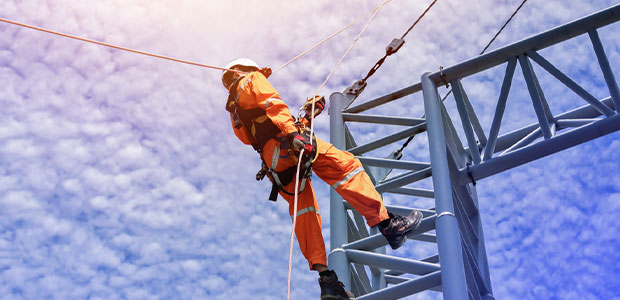
Ensuring Facility Safety with Fall Protection and PPE
Beyond fall protection systems, you can enhance the safety of your workers by using various forms of PPE.
- By David Ivey
- Oct 01, 2021
Falls from heights remain among the leading causes of workplace injuries and fatalities, and fall protection violations are the most commonly cited by OSHA across all industries. Although many people think of fall protection as belonging to the realm of construction, there are many occasions inside our facilities in which fall protection is required.
According to OSHA’s fall protection standards, workers are required to be tied off anywhere they are working more than four feet off the ground. This scenario occurs frequently in many types of facilities in the general industry during everyday activities such as building maintenance, equipment servicing or loading and unloading. It also may occur more often in your facility depending on the nature of the work you do.
Clearly, fall protection is not just for construction sites. It is important to understand what fall protection equipment you need to have at your facility to comply with OSHA regulations and to keep your workers safe.
It is worth taking a moment to review the so-called “ABCs of fall protection”—Anchorage, Body Wear and Connectors—as well as some of the standard PPE you can use to keep workers safe inside your facility.
Anchorage
The first element of fall protection is anchorage, or the secure point to which the workers’ fall protection system is tied off. Overhead tie-off is the gold standard for anchorage solutions, although alternatives exist for special circumstances where an overhead anchor point is impractical. In most facilities, however, overhead anchorage can be achieved in multiple ways.
Many facilities include permanent overhead anchors in situations where fall hazards are persistent and where workers may need overhead tie-off repeatedly. Permanent, fixed anchor points may be welded or clamped to the beams at various points in your facility. Some facilities have installed track systems for workers who need to access hardware or equipment at heights for repairs or maintenance. Others include permanent horizontal lifeline systems consisting of two or more anchor points connected by a cable to which workers can tie off, which allows workers to enjoy a wide range of motion while staying safely tied off at all times.
This article originally appeared in the October 2021 issue of Occupational Health & Safety.